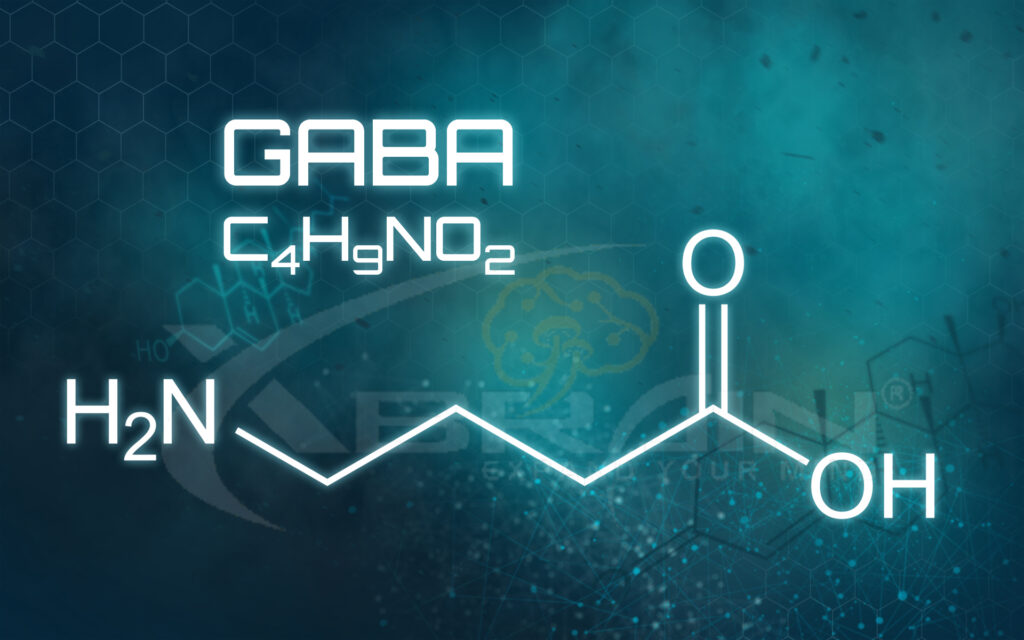THE NEUROTRANSMITTER GABA IS RESPONSIBLE FOR RELAXATION OF BRAIN AND MUSCLE

GABA (gamma-aminobutyric acid) is an amino acid that is a major inhibitory neurotransmitter found throughout the nervous system and is important for down regulating excitatory inputs so they don’t run amok. In general, there are two types of GABA receptors known as A and B. GABA A receptors are large protein channels that inhibit muscle and neurons by allowing chloride ions to flow into the cell.
In other words, they are chloride channels and when the neurotransmitter GABA binds to the channel it opens up and allows chloride to flow through to the inside. When this happens the inside of the cell (muscle or neuron) becomes more negative which inhibits the muscle or cell from firing momentarily when excitatory inputs are coming in. GABA B receptors also inhibit muscle and neuron excitability but do so by opening potassium channels and inhibiting calcium channels.
Nevertheless, GABA inhibits muscle and neurons making the muscle and/or neuron less likely to be able to fire. This has been known to generate a sedative effect on brain function and relaxation in muscle. Allosteric sites on GABA receptors are areas of drug interactions that act as anesthetics and/or muscle relaxants.
GABA is the major inhibitory transmitter found throughout the brain and is responsible for balancing the excitatory inputs. If the excitatory input is not in balance, this can lead to anxiety, sleeping disorders, irritability, lack of focus and concentration (attention deficit), hyperactivity and in extreme cases seizures. In extreme cases barbiturates and benzodiazepines may be administered to try to relax the brain. These drugs bind to allosteric sites on the GABA receptors causing them to open longer allowing for a longer period of relaxation. However, these drugs eventually fail to work and generate withdrawal systems when they are terminated. Therefore, some individuals use GABA supplements as a way to inhibit over excitation in the brain/muscle to reduce stress, insomnia, anxiety, hyperactivity and loss of mental concentration and focus.
The neurotransmitter GABA is made in the brain from the amino acid and neurotransmitter glutamate which is an excitatory neurotransmitter. This conversion from an excitatory transmitter to an inhibitory one requires the cofactor Vitamin B6.
There have been very few clinical trials to test GABA function simply because it has been assumed it doesn’t pass the blood-brain-barrier. Nevertheless, behavioral testing has been done with oral administration of GABA supplements. Many individuals report a decrease in their anxiety and an ability to relax. Larger doses tend to bring about sleep.
Some report that GABA promotes prolonged and restful sleep. Two clinical studies observed brain waves by doing an Electroencephalograms (EEG). Within in one hour of oral administration of GABA, a significant increase in Alpha waves was observed along with a decrease in beta waves. Beta waves are electrical conductances that travel along the brain from anterior to posterior when you are are wide awake and performing tasks. Alpha waves occur between fully wakes states and non-rapid eye movement sleep (NREM) when you are in a very relaxed physical and mental state. For example, when you are sitting quietly with your eyes closed. This can be achieved with meditation, yoga and other forms of relaxing exercises.
This provides some evidence that GABA is truly working but the actual mechanism is not understood at this time. Perhaps it is possible that if GABA is taken in high enough quantities, it will pass the blood- rain-barrier and bind directly to extracellular GABA A and B receptors causing a widespread inhibition of neurons. This in turn should enable an individual to relax and pay attention, focus, concentrate and decrease hyperactivity such that memory function should improve along with mood and motivation.
Researchers have long suspected that GABA A channels might be involved with the effects of alcohol.It is believed that alcohol interacts with an allosteric site on the GABA A receptor causing excessive influx of chloride causing the sedative effect (sleepiness and lack of motor control) and lack of sensation (numbing sensation). Chronic use of alcohol causes an increase in the production and release of GABA slowly but surely leading into addiction.
